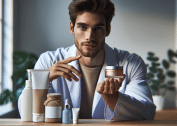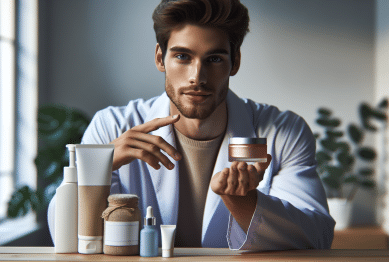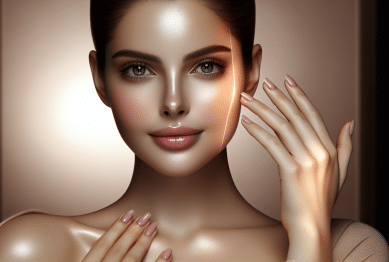Curious about why some skin just glows? Discover accessible, evidence-backed skincare steps that support healthy, luminous skin for all ages. This guide explores daily routines, ingredient choices, and supportive wellness practices that help skin stay fresh and vibrant naturally.
The Foundations of Radiant Skin
Glowing skin often starts with simplicity. Cleansing the skin thoroughly, but gently, is known to remove debris and excess oil, helping pores stay clear and reducing irritation. Many skincare experts recommend using a mild cleanser that matches your skin type. For example, those with oily skin may prefer gel cleansers, while dry skin types benefit from creamier textures. Avoiding harsh soaps and not over-washing is essential, as stripping away too much natural oil can disrupt the skin’s protective barrier, leading to dullness and sensitivity.
Hydration acts as another cornerstone for luminous skin. The skin’s outer layers need sufficient water content to remain plump and elastic. Moisturizers—whether gel, lotion, or cream—help lock water into the skin, supporting its natural repair processes overnight and throughout the day. Ingredients like hyaluronic acid and glycerin draw in moisture, while ceramides and fatty acids help seal it in. Drinking enough fluids and using a humidifier in dry environments also supports internal hydration, which can reflect on your skin’s surface. (Source: https://www.aad.org/public/everyday-care/skin-care-basics/dry/hydrate)
Daily sun protection finishes the basics. Broad-spectrum sunscreen shields skin from UVA and UVB rays, which contribute to wrinkles, spots, and loss of glow over time. Experts recommend a minimum of SPF 30 for most people, with regular reapplication if spending time outdoors. Even on cloudy days, UV rays penetrate the atmosphere, so sunscreen should be a daily habit. Protective hats or clothing also enhance defense against environmental factors that can age and dull the skin. These measures, integrated into a routine, lay a strong foundation for lasting radiance. (Source: https://www.skincancer.org/skin-cancer-prevention/sun-protection/sunscreen/)
Key Ingredients That Support Your Natural Glow
Certain skincare ingredients are consistently praised for their glow-enhancing effects. Vitamin C, a potent antioxidant, is known to brighten the complexion by helping to mitigate visible effects of environmental stress. Many serums and creams highlight Vitamin C for its ability to even skin tone and encourage collagen formation, which leads to a firmer appearance. Experts suggest applying this vitamin during the day, often in serum form, and following with sunscreen to maximize benefits.
Niacinamide, a form of Vitamin B3, also plays a crucial role. It’s featured in many products due to its abilities to minimize pores, refine uneven texture, and boost the skin’s natural protective barrier. Combined with other hydrators like hyaluronic acid, niacinamide can contribute to both an immediate and long-term glow. Users with sensitive skin often appreciate niacinamide because of its gentle, non-irritating nature. (Source: https://www.ncbi.nlm.nih.gov/pmc/articles/PMC2921764/)
For those managing occasional breakouts or dullness, incorporating exfoliating acids—such as glycolic or lactic acid—may encourage cell turnover, revealing fresh skin underneath. Used as directed, these acids can smooth texture and amplify radiance over time. Exfoliation does not need to be daily; once or twice weekly is sufficient for most routines. Always follow up with calming products and sunscreen, as fresh skin is especially vulnerable to the sun’s rays and irritation. (Source: https://www.health.harvard.edu/staying-healthy/the-benefits-and-risks-of-exfoliating)
Building a Realistic Routine for Daily Life
Consistency is more important than perfection in a skincare routine. Most dermatologists recommend tailoring your routine to your schedule and needs, even if that means starting with a minimal approach. A morning routine typically involves cleansing, applying antioxidants or serums, moisturizing, and then sunscreen. At night, the focus shifts to cleansing again, then applying targeted treatments like retinol, followed by a rich moisturizer. The key is not how many products are used, but how well skin tolerates each step.
Listening to your skin is essential. Skin needs often change with seasons, stress levels, or diet. Adjusting products or simplifying routines during busy periods can prevent overexposure to actives, which may lead to sensitivity. Even skipping a step—like exfoliation—when skin feels raw is sometimes the healthiest approach. This flexibility means people of all ages can create a glowing skin routine without stress or excess spending on unnecessary products. (Source: https://www.aad.org/public/everyday-care/skin-care-secrets/routine/routine-for-healthy-skin)
Don’t underestimate rest and nutrition. A good night’s sleep and a diet rich in antioxidants, healthy fats, and hydration bolster what topical skincare can achieve. For many, wellness practices like mindfulness or gentle exercise contribute to skin’s visible vitality. Approaching skincare as a lifestyle—rather than just topical care—enables support from the inside out. When the mind and body are nurtured, the skin often tells a brighter story.
Common Myths and Missteps in Skincare
It’s easy to encounter confusing advice about skincare in advertisements and social media. One common myth is that ‘more is better’; in fact, layering too many actives can cause redness or flaking. Some believe oily skin does not need moisturizer, but hydration is critical for all skin types. Well-formulated non-comedogenic moisturizers support oil balance even for acne-prone complexions. (Source: https://www.aad.org/public/diseases/acne/skin-care/mistakes)
Another myth is that exfoliating daily will create faster results. Over-exfoliation can actually weaken the skin’s acid mantle, inviting dryness or breakouts. True radiance develops gradually through gentle, ongoing care rather than quick fixes. Beware of products promising overnight transformations, as lasting results require both patience and science-backed ingredients. Trusted dermatology sources emphasize patience and prevention for effective outcomes.
Harsh DIY treatments abound online, but not all household ingredients suit the face. Lemon juice, baking soda, or toothpaste may cause irritation or disrupt the skin’s pH. Seeking guidance from certified experts, reading labels, and patch testing new products helps prevent unnecessary reactions. A little research before introducing something new can often save time and discomfort—and keep your skin journey positive.
Supporting Glow With Wellness Habits
True beauty extends beyond the skin’s surface. Hydration, sleep, and nutrition work synergistically with topical skincare for glow. Drinking water throughout the day, eating antioxidant-rich fruits and vegetables, and choosing healthy fats like omega-3s provide lasting support. Many nutrients, including vitamins A, C, and E, are critical for skin renewal and defense against environmental stress. Simple snacks—like berries, nuts, and leafy greens—make a difference over time. (Source: https://www.hsph.harvard.edu/nutritionsource/vitamins/vitamin-e/)
Managing stress and prioritizing sleep also play major roles. During restful sleep, the skin undergoes regeneration and repair. Chronic stress, on the other hand, releases hormones that may worsen irritation, breakouts, or dull texture. Mindful practices, such as gentle yoga, meditation, or regular walks, help regulate stress and indirectly benefit skin health. Finding moments of joy in the day further supports overall wellness and radiance.
Movement matters as much as rest. Exercise increases circulation, nourishing skin cells and supporting detoxification. Moderate activity supports collagen production and promotes that sought-after post-workout glow. Even simple activities like stretching, brisk walking, or dancing at home add up. Glowing skin, then, becomes a reflection of daily self-care habits that nurture both body and mind. (Source: https://www.cdc.gov/physicalactivity/basics/pa-health/index.htm)
When to Seek Professional Skincare Guidance
Most skincare routines can be handled at home, but some changes are best evaluated by a dermatologist. Persistent irritation, sudden breakouts, or signs like moles changing in appearance require trained assessment. A professional can tailor advice for complex concerns, such as eczema, rosacea, or adult acne, ensuring interventions remain both safe and effective. Early intervention may prevent complications or unwanted skin marks.
Some skin treatments, including prescription retinoids or light-based therapies, require supervision. Individuals with darker skin tones, sensitive skin, or chronic medical conditions may especially benefit from specialized plans. Customized regimens account for personal needs, helping achieve realistic goals without unnecessary disappointment or risks. Wellness and beauty clinics often offer consultations that blend holistic care and medical insight. (Source: https://www.womenshealth.gov/a-z-topics/skincare)
Regular check-ins with a trusted practitioner, even just once a year, offer peace of mind. Questions about age-related changes, new products, or seasonal adjustments are important. Support from licensed experts helps individuals avoid common pitfalls and maximize the effectiveness of their daily skincare steps. Sometimes, a tiny adjustment in routine under professional advice transforms skin comfort and glow for the better.
References
1. American Academy of Dermatology. (n.d.). How to hydrate your skin. Retrieved from https://www.aad.org/public/everyday-care/skin-care-basics/dry/hydrate
2. Skin Cancer Foundation. (n.d.). How does sunscreen protect my skin? Retrieved from https://www.skincancer.org/skin-cancer-prevention/sun-protection/sunscreen/
3. Draelos, Z.D. (2010). The efficacy of niacinamide and its effects on skin. Journal of Clinical and Aesthetic Dermatology. Retrieved from https://www.ncbi.nlm.nih.gov/pmc/articles/PMC2921764/
4. Harvard Health Publishing. (n.d.). The benefits and risks of exfoliating. Retrieved from https://www.health.harvard.edu/staying-healthy/the-benefits-and-risks-of-exfoliating
5. Harvard T.H. Chan School of Public Health. (n.d.). The Nutrition Source: Vitamin E. Retrieved from https://www.hsph.harvard.edu/nutritionsource/vitamins/vitamin-e/
6. Women’s Health.gov. (n.d.). Skincare. Retrieved from https://www.womenshealth.gov/a-z-topics/skincare









